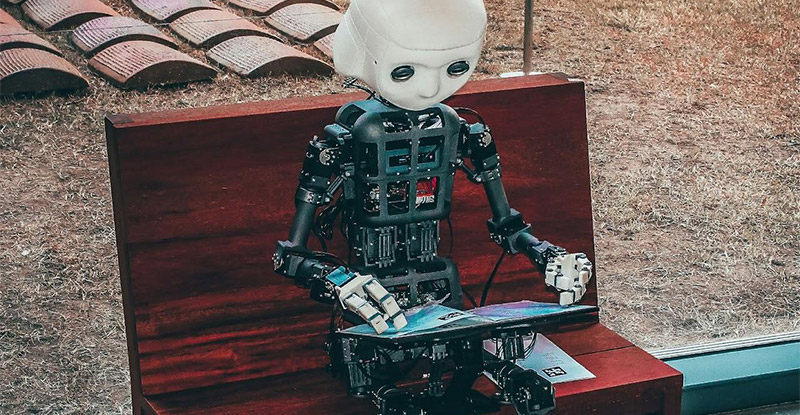Innovative Integration: Exploring the Impact of Automation on Student Learning


If you want to search for scholarly sources on a particular subject or topic, would you fancy going to a physical library or using online databases such as Google Scholar or PubMed? Definitely, due to convenience and access to broad educational materials, many students would prefer the latter choice. Such transformation has opened the way for several innovations. A notable example is automation, which employs techniques and processes to perform repetitive tasks with little or no human intervention. Similar to the way the Second Industrial Revolution increased access to education, the application of robotics and related technologies is changing the mode of learning in US colleges and abroad.
For instance, many tech companies have created AI tools based on automation and testing to offer text-based solutions. In particular, you can use ChatGPT to generate ideas for your essays and research papers. Whereas these tools circumvented plagiarism issues (a serious violation of academic integrity), their texts might contain inaccurate data and AI-generated content. As a consequence, you’ll need to complement automation with a paper writing service to handle repetitive tasks such as discussion posts, replies, and homework. Besides doing assignments, eliminating human intervention has a lot of impacts on students’ assimilation of knowledge and preparation for exams.
Why do you think students attending the same class score different grades? Do you think changing teaching methodology would impact academic performance? Without a doubt, students’ cognitive abilities differ. In other words, some require more time to grasp concepts taught in class than others. For that reason, schools incorporate different teaching methodologies to meet varying academic needs. While learning institutions have understood how to overcome this challenge, a gap still exists in educational materials that can independently benefit fast and slow learners.
Thanks to automation and AI, scholars can identify, review, and consolidate academic resources that meet specific students’ needs. For example, robotics and related tools can summarize every single piece of information that you’ve learned over a certain period and churn out areas of knowledge deficit. Afterward, you can focus on improving identified areas through consultation or seeking online help, for example, hiring a tutor on the Internet or purchasing customized materials. What’s more, professors can utilize the same strategy in creating lesson notes and plans.

How often do you think you’ll need to consult when pursuing a STEM program? You’ll most likely agree that passing programming and mathematics is a hard nut to crack without assistance. For that reason, students pursuing these programs depend on group discussions and consultations to excel.
While these two strategies offer a solution to the challenge mentioned above, they might not be effective among students with part-time jobs or residing off-campus. Besides, many professors require students to make appointments because of their busy schedules, which are attributable to grading papers and involvement in research.
The availability of robotics that provides solutions to repetitive problems can offer 24/7 assistance. For example, a professor can compile a list of frequently asked queries with their answer in an online database. What’s more, a student can consult through the same platform. Every user on the podium would automatically receive a notification. Whoever has the answer or knows the steps for solving it can respond. The information will remain in the database for future reference. The automation of concepts would reduce the time taken to get the required help.
Have you ever come across a reading technique known as 4R (Read, Reread, Review, and Recite)? Even though this acronym seems to be new, you’ve definitely come across each word. Many students who have achieved excellent grades in high school and college have used this strategy. In most cases, they read a chapter of a book twice, search and answer questions related to the concepts learned, and narrate the information to their peers. The primary challenge of the 4R approach has always been finding adequate test questions. Some have relied on those listed at the end of the chapter. However, they’ve never been sufficient to cover every concept.
Rather than searching for questions only, automation allows students to test their grasp of knowledge. For example, if you’re a medical student, you can find enough multiple-choice questions (MCQ) to practice. In particular, robotics incorporating scantron technology allows you to take exams on the concepts you’ve read and receive instant grades. Other automation would explain questions that you fail during personal evaluation. Ideally, with this innovation, you don’t need a tutor to gauge your knowledge comprehension.
Why do you think some people fail to graduate from medical school? Besides learning clinical courses such as human anatomy and physiology, biochemistry, microbiology, and immunology, students must pass practical and oral exams. For instance, at the end of the semester, you’ll need to face a committee where you’ll answer random questions.

Depending on the grading system, oral might account for 5% to 10% of the overall mark in a course. Even though you can write a physiological process or mode of drug action, you won’t score without giving accurate narration. So, how does automation help you?
Besides reading and mastering concepts, you can let an automated robot narrate concepts for you. The good thing about this machine is that it can repeat information as many times as possible. What’s more, you can let it ask you random questions. As you answer them, it will tell you pass or fail. If the robot incorporates AI, it might twist some answers or progress to hard ones as you master. Ideally, with automation at your disposal, you don’t need to disturb a classmate when you want to practice for oral exams.
Whereas automation and AI are different, they tend to work together. For instance, the latter depends on the former and other innovative tools to function. In this case, the focus has been on how automation impacts learning. It’s apparent that it streamlines consultation, preparing for exams, and understanding complex ideas. Even with its benefit in the education sector, implementation of this innovation should be consciously to safeguard the integrity of education.